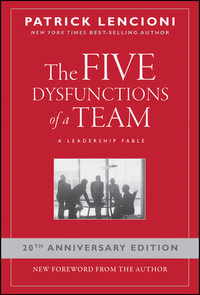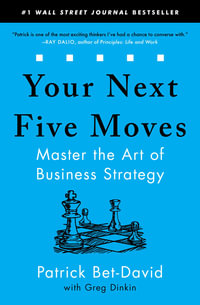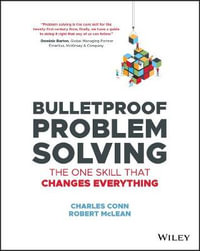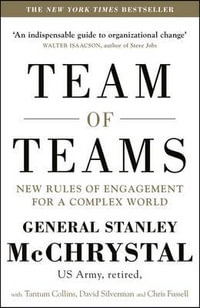| Introduction | p. 1 |
| Scope | p. 1 |
| Realism | p. 2 |
| Models, Validation, and Precision | p. 3 |
| Value | p. 4 |
| Examples | |
| Two Approaches to Solving Decision Trees--A Class-Action-Suit Example | p. 7 |
| Introduction | p. 7 |
| Building the Decision Tree | p. 9 |
| What Is the Question? | p. 14 |
| Interpretation of the Probabilistic-Branching Model | p. 19 |
| So, So What? | p. 20 |
| Terrorism Risk Models--Relative and Absolute Risk | p. 21 |
| Terrorism Relative-Risk Model | p. 21 |
| What Is the Question? | p. 22 |
| Building the Contributing-Factor Diagram for the Relative-Ranking Terrorist-Threat Risk Model | p. 23 |
| Category Weights | p. 27 |
| Relative-Risk Model Equations | p. 28 |
| Relative-Risk Model Applied to Terrorist Organization #1 | p. 29 |
| Relative-Risk Model Results from Evaluation of Terrorist Organization #1 | p. 37 |
| Relative-Risk Model Applied to Terrorist Organization #2 | p. 39 |
| Relative-Risk Model Results from Evaluation of Terrorist Organization #2 | p. 48 |
| Comparison of the Two Terrorist Organizations | p. 49 |
| Building the Terrorism Absolute-Cost Risk Model | p. 53 |
| Absolute-Cost Risk Model Equations | p. 55 |
| Application of the Absolute-Cost Risk Model to Terrorist Organization #2 | p. 55 |
| Absolute-Cost Risk Model Results for Evaluation of Terrorist Organization #2 | p. 61 |
| So, So What? | p. 62 |
| Gathering Information Consistently in an Inconsistent World | p. 67 |
| Introduction | p. 67 |
| The Problem | p. 70 |
| The Solution | p. 72 |
| So, So What? | p. 75 |
| New Manufacturing Facility--Business-Justification Model | p. 79 |
| Introduction | p. 79 |
| What Is the Question? | p. 79 |
| Construction of the Contributing-Factor Diagram | p. 82 |
| Populating the Model with Data | p. 84 |
| Risk Model Equations | p. 92 |
| Results from Model Execution | p. 94 |
| So, So What? | p. 95 |
| Oil-Field-Development Investment--Opportunity Risk Model | p. 101 |
| Introduction | p. 101 |
| What Is the Question? | p. 102 |
| Categories and Variables | p. 103 |
| Field-Development Risk Model Equations | p. 104 |
| Populating the Model with Data | p. 107 |
| Results from Model Execution | p. 113 |
| So, So What? | p. 117 |
| Using Chance of Failure and Risk-Weighted Values to Reflect the Effect of "Soft" Issues on the Value of an Opportunity | p. 119 |
| Introduction | p. 119 |
| Accurate Estimates of Value Are Essential | p. 121 |
| Types of Chance of Failure | p. 121 |
| How to Express and Use Chance of Failure | p. 124 |
| Risk-Weighted Values and the Value of a Portfolio Element | p. 128 |
| Value of a Portfolio Composed of Dissimilar Elements | p. 131 |
| So, So What? | p. 134 |
| Production-Sharing Agreement Risk Model | p. 135 |
| Introduction | p. 135 |
| What Is the Question? | p. 135 |
| Building the Contributing-Factor Diagrams | p. 137 |
| Risk-Model Equations | p. 139 |
| Populating the Model with Technical Data | p. 146 |
| Chances of Abject Failure | p. 147 |
| Populating the Model with Financial Data | p. 148 |
| Results from the Model | p. 152 |
| So, So What? | p. 158 |
| Scheduling and Optimization Risk Model | p. 163 |
| Introduction | p. 163 |
| The Problem | p. 164 |
| Design of the Model and the Contributing-Factor Diagram | p. 166 |
| The Risk-Model Code | p. 169 |
| Results from Model Execution | p. 171 |
| So, So What? | p. 175 |
| Decision/Option-Selection Risk Model | p. 179 |
| Introduction | p. 179 |
| The Current Situation | p. 180 |
| The Problem | p. 182 |
| Results from Model Execution | p. 185 |
| So, So What? | p. 191 |
| Risk Process to Identify Business Drivers, Maximize Value, and Determine the Value of Potential Expenditures | p. 193 |
| Introduction | p. 193 |
| The Problem | p. 194 |
| The Risk/Uncertainty Model | p. 195 |
| Populating the Model with Data | p. 196 |
| Results from Model Execution | p. 199 |
| Determining Business Drivers and Maximizing Value | p. 201 |
| Determining the Value of Potential Expenditures | p. 206 |
| So, So What? | p. 206 |
| Summary | p. 209 |
| Other Applications | p. 209 |
| Insurance Example | p. 209 |
| Pricing Example | p. 210 |
| Environmental Applications | p. 211 |
| Legal Applications | p. 211 |
| Security Applications | p. 212 |
| It Is Mostly the Process--Not the Technology | p. 213 |
| Accomplishment of Vision Generates Real Returns | p. 215 |
| Exploration Example | p. 215 |
| Maintenance/Construction Example | p. 216 |
| Fundamentals of Risk Assessment | |
| Building a Consensus Model | p. 221 |
| What Is the Question?--Most of the Time and Effort | p. 221 |
| Consensus Model | p. 222 |
| Group Dynamics | p. 223 |
| Write It Down | p. 224 |
| Sort It Out | p. 225 |
| Group Dynamics Again | p. 226 |
| Units | p. 227 |
| Overarching Categories | p. 228 |
| Build a Contributing-Factor Diagram | p. 229 |
| The Contributing-Factor Diagram--Getting Started | p. 229 |
| Identify and Define Variables | p. 233 |
| Ask the Right Question | p. 234 |
| Double Dipping | p. 235 |
| Double Dipping and Counting the Chickens | p. 236 |
| Fixing the Double Dipping and Counting-the-Chickens Problem | p. 236 |
| CFD-Building Example | p. 237 |
| Short List of Hints for Building a CFD | p. 241 |
| Monte Carlo Analysis | p. 243 |
| A Bit of History | p. 243 |
| For What Is It Good? | p. 244 |
| Simple Monte Carlo Example | p. 244 |
| How Many Random Comparisons Are Enough? | p. 245 |
| Output from Monte Carlo Analysis--The Frequency and Cumulative Frequency Plots | p. 246 |
| Interpreting Cumulative Frequency Plots | p. 247 |
| Combining Monte Carlo Output Curves | p. 253 |
| Decisions and Distributions | p. 255 |
| Decisions | p. 255 |
| Just What Is a Distribution? | p. 255 |
| Distributions--How to Approach Them | p. 260 |
| Symmetrical Distributions | p. 261 |
| Skewed Distributions | p. 262 |
| Spiked Distributions | p. 263 |
| Flat Distributions | p. 265 |
| Truncated Distributions | p. 266 |
| Discrete Distributions | p. 266 |
| Bimodal Distributions | p. 268 |
| Reading Data from a File | p. 270 |
| Peakedness | p. 271 |
| Specific Distribution Types | p. 273 |
| Chance of Failure | p. 275 |
| Chance of Failure--What Is It? | p. 275 |
| Failure of a Risk Component | p. 276 |
| Chance of Failure That Does Not Affect an Input Distribution | p. 277 |
| Incorporating Chance of Failure in a Plot of Cumulative Frequency | p. 278 |
| Another Reason for Chance of Failure | p. 280 |
| The "Inserting 0s Work Around" | p. 282 |
| COF and Multiple Output Variables | p. 284 |
| Time-Series Analysis and Dependence | p. 285 |
| Introduction to Time-Series Analysis and Dependence | p. 285 |
| Time-Series Analysis--Why? | p. 285 |
| Time-Series Analysis--How? | p. 286 |
| Time-Series Analysis--Results | p. 287 |
| Some Things To Consider | p. 288 |
| Dependence--What Is It? | p. 290 |
| Independent and Dependent Variables | p. 291 |
| Degree of Dependence | p. 291 |
| Multiple Dependencies and Circular Dependence | p. 294 |
| Effect of Dependence on Monte Carlo Output | p. 295 |
| Dependence--It's Ubiquitous | p. 295 |
| Risk-Weighted Values and Sensitivity Analysis | p. 299 |
| Introduction to Risk-Weighted Values and Sensitivity Analysis | p. 299 |
| Risk-Weighted Values--Why? | p. 299 |
| Risk-Weighted Values--How? | p. 301 |
| The Net Risk-Weighted Value | p. 303 |
| The Economic Risk-Weighted Resource Value | p. 304 |
| Risk-Weighted Values--The Answer | p. 305 |
| Sensitivity Analysis--Why? | p. 306 |
| Sensitivity Analysis--How? | p. 308 |
| Sensitivity Analysis--Results | p. 311 |
| Selected Readings | p. 313 |
| Index | p. 317 |
| Table of Contents provided by Syndetics. All Rights Reserved. |
























